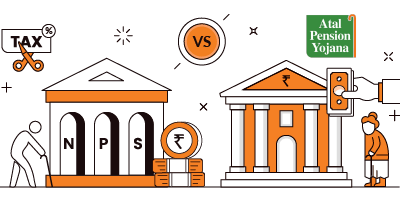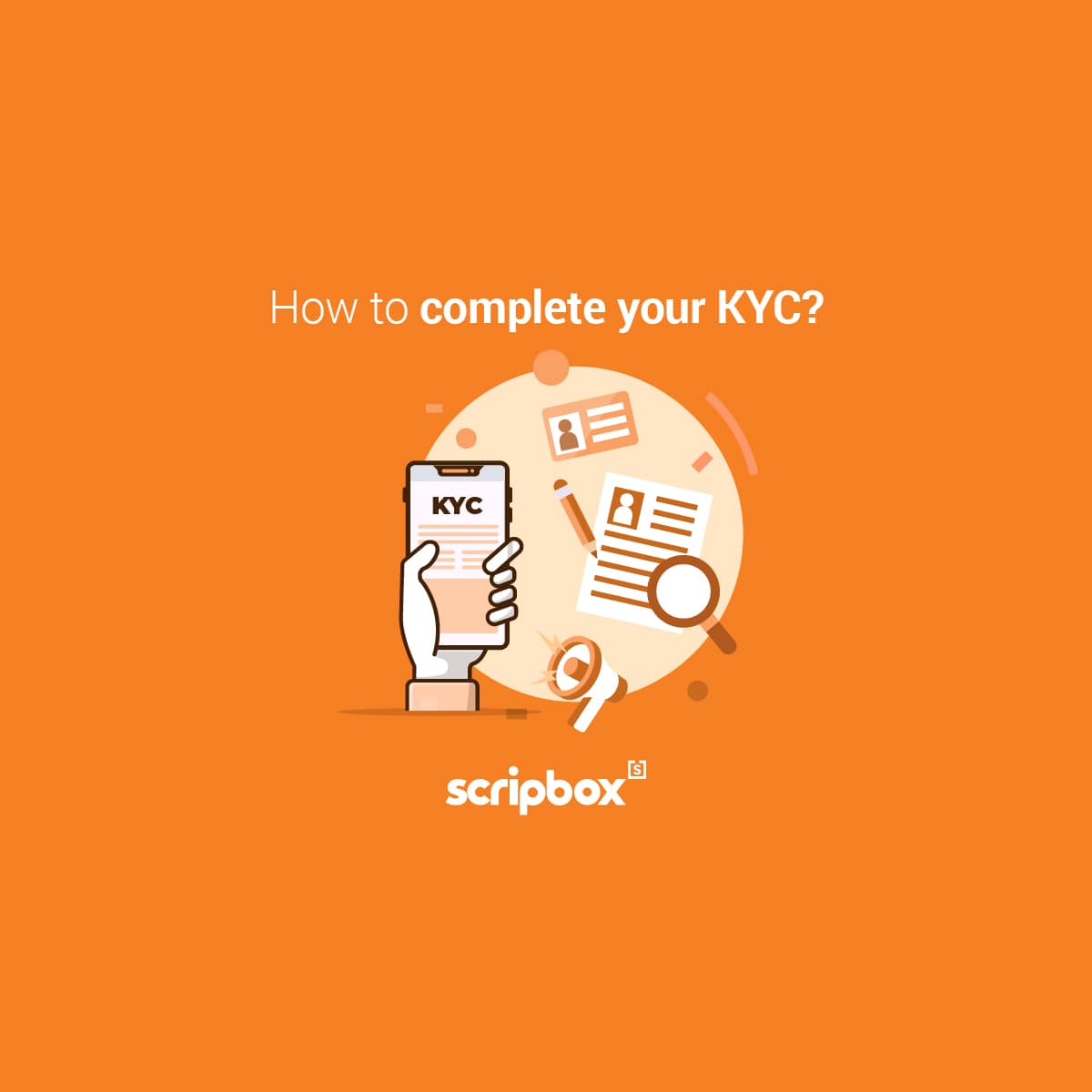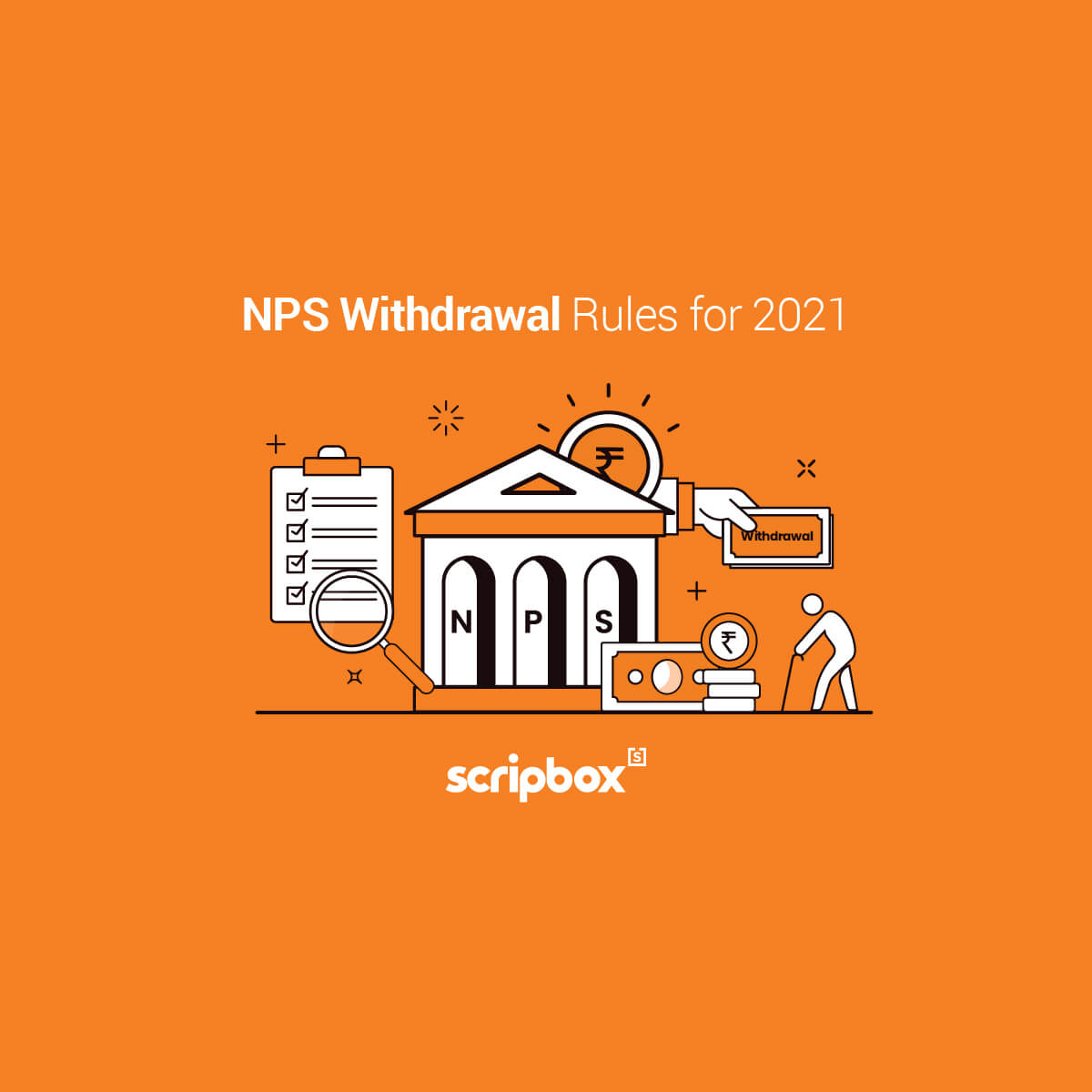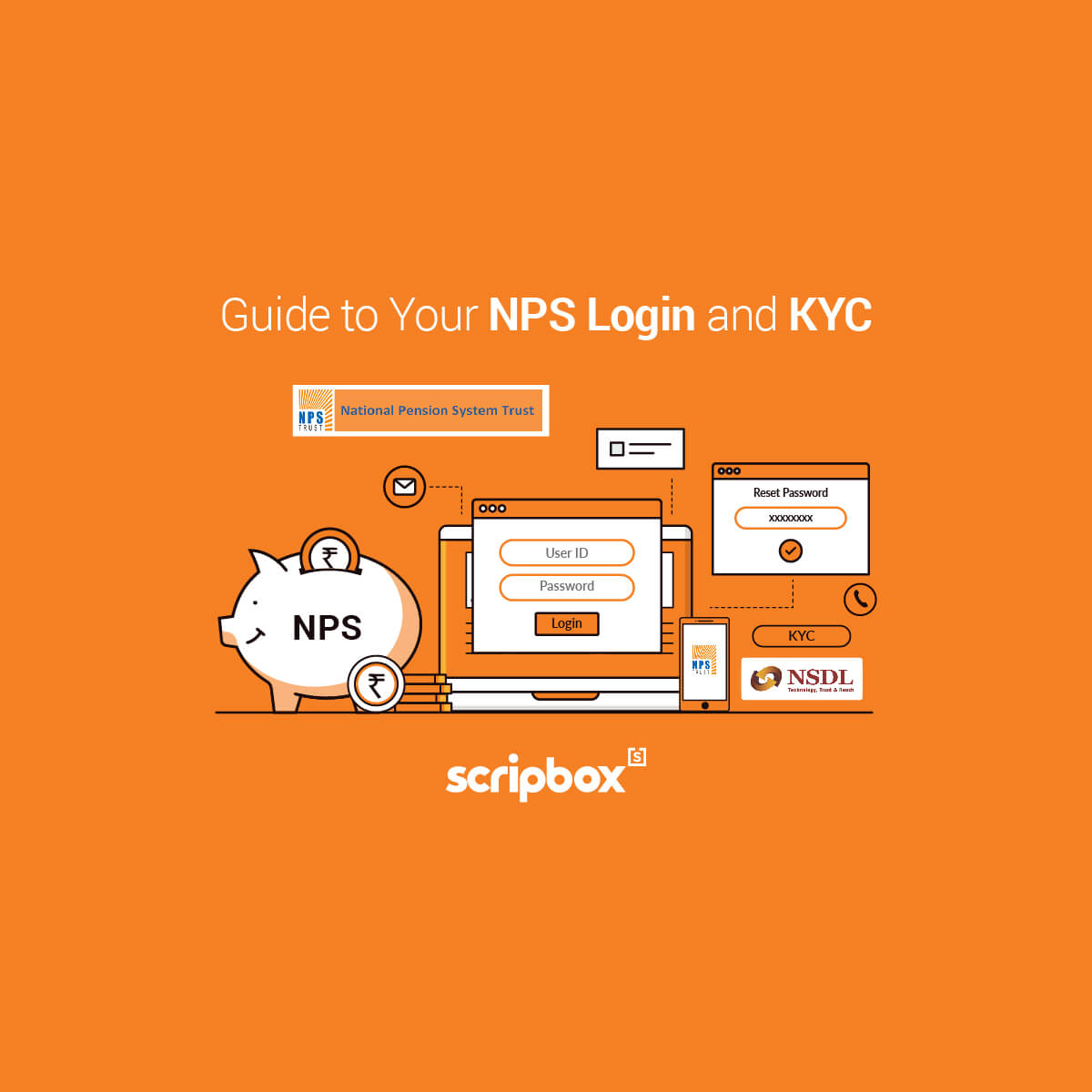What is the National Pension Scheme (NPS)?
National Pension Scheme (NPS) is a long-term investment plan started by the Central Government. It falls under the purview of the Pension Fund Regulatory and Development Authority (PFRDA) and is open to employees from the public, private sectors along with the employees in the unorganized sector.
As a part of the scheme, it requires the investors to invest in a pension account during the course of their employment. Post-retirement, the employees can take a certain portion of the corpus. As for the balance amount, it will be provided to the employee as a monthly pension. It allows the people who have a low-risk appetite an opportunity to invest in a safe instrument. This can have a changing impact on the lives of people post retirement.
What is Atal Pension Yojana (APY)?
Atal Pension Yojana came into force in order to provide a pension scheme to the unorganized sector. The major objective of the scheme is to provide Indian citizens with a security blanket from illness, accidents, etc. As per the current regulations, the amount collected under the pension scheme is to be managed by the Pension Fund Regulatory Authority of India.
The scheme allows an option of getting a fixed pension of Rs. 1000, Rs. 2000, Rs. 3000, Rs. 4000, Rs. 5000 on attaining the age of 60. This will be determined on the basis of an individual’s age and the contribution made by them. In order to avail of the benefits of the pension scheme, the below conditions must be met:
- Individual must be a citizen of India
- The age of the individual must be between 18-40
- The individual should have made contributions for a minimum period of 20 years
- The bank account of the individual should be linked to the aadhar.
Central Government will co-contribute 50% of the total yearly contribution or Rs. 1000 /- per annum, whichever is lower, for the period of 5 Years in the account of subscribers who join the scheme up to 31st December 2015 and who are not a member of any Statutory Social Scheme and not an Income taxpayer. Subscribers who are joining the APY scheme at an early stage of age would be required to pay a lesser monthly subscription amount as compared to the subscriber joining at a later age.
Difference Between NPS vs APY
| Particulars | National Pension Scheme | Atal Pension Yojana |
| Eligibility | Indian citizens, as well as non-resident Indians, can invest in the scheme. | It allows only the residents of India to invest in the scheme. |
| Age limit | Subscribers of the scheme should be of minimum 18 years of age and a maximum of 55 years of age. | The scheme has an entry age of 18 years and maximum age of 40 years. |
| Pension | NPS does not provide any guarantee of pension post-retirement. | Atal Pension Yojana provides a guaranteed pension facility post-retirement. |
| Types of account | NPS has two types of accounts, Tier 1 and Tier 2. | The scheme provides for investment only in one account. |
| Support from the government | The government makes no contribution towards the national pension scheme. The investments have to be made by the subscribers only. | The government provides some monetary support to the investors. |
| Premature Withdrawal | The premature withdrawal is allowed only in tier 2 accounts. | Atal Pension Yojana does not provide an option of premature withdrawal. |
Read also the Difference between NPS and SIP
Which is better NPS vs APY?
With the objective of providing pensions to the citizens of India, both schemes differ in terms of pension return methods. Let us discuss the difference between NPS vs APY in-detail below:
Returns under Atal Pension Yojana (APY):
Atal Pension Yojana came into force in order to provide a pension scheme to the unorganized sector. The scheme allows an option of getting a fixed pension of Rs. 1000, Rs. 2000, Rs. 3000, Rs. 4000, Rs. 5000 on attaining the age of 60. This will be determined on the basis of an individual’s age and the contribution made by them.
| Age of entry | Years of Contribution | Monthly Pension of Rs. 1000 | Monthly Pension of Rs. 2000 | Monthly Pension of Rs. 3000 | Monthly Pension of Rs. 4000 | Monthly Pension of Rs. 5000 |
| 18 | 42 | 42 | 84 | 126 | 168 | 210 |
| 19 | 41 | 46 | 92 | 138 | 183 | 228 |
| 20 | 40 | 50 | 100 | 150 | 198 | 248 |
| 21 | 39 | 54 | 108 | 162 | 215 | 269 |
| 22 | 38 | 59 | 117 | 177 | 234 | 292 |
| 23 | 37 | 64 | 127 | 192 | 254 | 318 |
| 24 | 36 | 70 | 139 | 208 | 277 | 346 |
| 25 | 35 | 76 | 151 | 226 | 301 | 376 |
| 26 | 34 | 82 | 164 | 246 | 327 | 409 |
| 27 | 33 | 90 | 178 | 268 | 356 | 446 |
| 28 | 32 | 97 | 194 | 292 | 388 | 485 |
| 29 | 31 | 106 | 212 | 318 | 423 | 529 |
| 30 | 30 | 116 | 231 | 347 | 462 | 577 |
| 31 | 29 | 126 | 252 | 379 | 504 | 630 |
| 32 | 28 | 138 | 276 | 414 | 551 | 689 |
| 33 | 27 | 151 | 302 | 453 | 602 | 752 |
| 34 | 26 | 165 | 330 | 495 | 659 | 824 |
| 35 | 25 | 181 | 362 | 543 | 722 | 902 |
| 36 | 24 | 198 | 396 | 594 | 792 | 990 |
| 37 | 23 | 218 | 436 | 654 | 870 | 1087 |
| 38 | 22 | 240 | 480 | 720 | 957 | 1196 |
| 39 | 21 | 264 | 528 | 792 | 1054 | 1318 |
| 40 | 20 | 291 | 582 | 873 | 1164 | 1454 |
Returns under the National Pension Scheme (NPS):
The returns under the NPS are dependent on the current market conditions. The fund house arrives at the returns on the basis of the net asset value. Furthermore, the returns also depend on the type of investment opted by the subscriber. An equity portfolio might generate a better return as compared to a conservative portfolio. You can also use Scripbox’s NPS calculator and estimate the maturity value. Below are the returns generated by the various portfolio mix under the NPS:
| Type of subscriber | Portfolio Mix | Average Returns |
| Aggressive Subscriber | 20% investment in gilt funds30% Corporate bonds50% Equity Funds | 6 months – 8.31%1 year – 16.48%3 years – 9.49%5 years – 12.61% |
| Balanced Subscriber | 33.3% Gilt Funds33.3% Corporate Bonds33.3% Equity Funds | 6 months – 6.71%1 year – 11.49%3 years – 9.74%5 years – 11.75% |
| Conservative Subscriber | 50% Gilt Funds30% Corporate Bonds20% Equity Funds | 6 months – 5.36%1 year – 7.17%3 years – 9.93%5 years – 11.04% |
Thus, in conclusion, the investors who are looking to take the advantage of market conditions should invest in NPS. It is to be noted that the return would be calculated based on the prevalent market conditions and will not be fixed. However, if the investors are looking for a safe fixed return within a predefined range, they can consider investing in Atal Pension Yojana. This article will help you understand the difference between NPS vs APY in detail to take an informed decision.
Read also about the NPS vs Mutual Fund
You may also like to read about the NPS Contribution
Related Articles
- What is the National Pension Scheme (NPS)?
- What is Atal Pension Yojana (APY)?
- Difference Between NPS vs APY
- Which is better NPS vs APY?
- Confused if your portfolio is performing right enough to meet your goals?
- How long have you been investing in mutual funds?
- What is your current portfolio size?
- What is your approximate annual household income?
- Your profile does not qualify for a call with a Financial Expert.
































Show comments